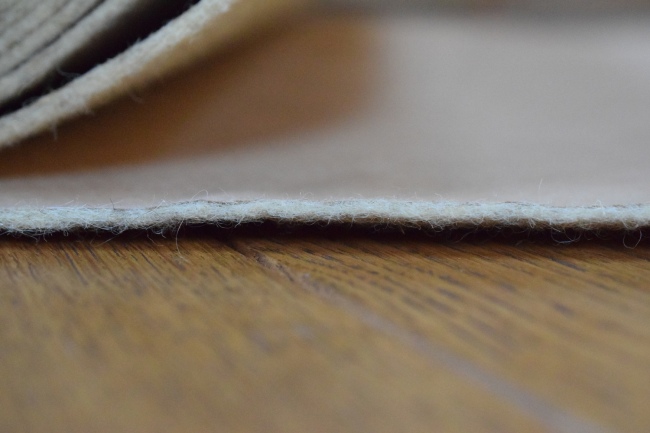Does engineered wood need underlay?
6th Oct 2022
When fitting an engineered wood floor, there are a number of points to consider including whether or not the engineered floor needs an underlay?
An underlay is a thin material that is designed to be laid in between the wood flooring and the subfloor. Underlays can come in lots of different materials (such as foam, recycled fibres and natural wool underlay), different thicknesses and different thermal and acoustic values.

Whether an underlay is required, or indeed possible, is firstly dependant on the method in which you intend to lay the engineered oak floor. When using the full adhesion method of fitting (gluing directly to the subfloor using an MS Polymer Adhesive) an underlay is not typically used. Likewise when fixing directly to the joists, an underlay is not used. Insulation is often fitted in between each joist in this scenario (such as our sheep wool insulation rolls).
The floating floor method is the most common method of fitting where an underlay would be used. A floated floor involves laying the engineered oak boards, with no direct fixing to the subfloor. Instead, an underlay is laid over the subfloor - with the engineered oak boards then fitted on top. The tongue and groove of each engineered board is glued together using a PVA Wood Glue - leaving the boards with no direct fixing to the subfloor.
When fixing directly to a wooden subfloor using the screwing or nailing method, a suitable underlay could again be used.

The use of a quality underlay can bring with it both acoustic and thermal value to the property.
A good quality underlay will cushion the impact between the wooden floor and the subfloor – absorbing any vibrations. The cushioning in affect reduces the impact sound of the floor. This makes acoustic underlays particularly useful when used on second floors or areas where the noise needs to be reduced. Further to this structure borne sound reduction, underlays can also help to reduce airborne sounds. Airborne sounds are sounds such as music and speech which are carried through airspaces that separate living areas (such as floors and walls).
Quality underlays can add thermal value into your property. Different underlays have different tog ratings - which affect their insulation value. For areas with no insulation in the floor - or areas which may require some additional insulation – underlays are a great way of increasing the thermal value.

Glue or Float?
So you have a concrete subfloor... Should you go for the full adhesion method of fitting mentioned above or do you opt for the laying of an underlay and choosing the floating method?
For situations where there is no insulation in the concrete, an underlay with a built in vapour barrier could be used. This barrier is designed to stop any moisture rising up from the subfloor. Without this, any moisture could come into contact with the floor boards, causing them to buckle. An alternative to laying an underlay in this same scenario would be to pour a liquid DPM onto the screed first, to then glue the boards directly onto.
If you want your engineered wood floor to last a long time, you need an even subfloor. Underlays smooth out the subfloor and cancel out minor dips and flaws that might otherwise affect your new floor. The even surface an underlay provides creates more stability for your engineered wood floor. The counter option to this with the full adhesion method would require more levelling of the screed.
Due to a "less mess" approach, the use of an underlay is often seen as an easier and quicker method of fitting an engineered oak floor in comparison to the full adhesion method.
So what are the disadvantages of using an underlay?
One of our main recommendations with the use of underlays is not to use them as apart of an underfloor heating system. This is because we do not recommend laying an engineered oak floor as a floating floor over underfloor heating. When engineered oak boards are fitted as a floating system, the boards themselves effectively become one slab of wood. As the temperature of the underfloor heating system changes, the boards will move naturally. This can create stress in a specific point in the floor, if the boards are glued together. This pressure can cause the tongue and grooves of this specific point to break.
A further point to note is that in comparison to a "fixed down" engineered oak floor, a floated engineered floor can sometimes not feel as sturdy underfoot. Floated floors can feel almost "bouncy" in comparison. To help lessen the impact of this, a better quality engineered board and a better quality underlay could be used.
Finally with a standard underlay, it is not typically recommend for use with a parquet engineered oak floor. Parquet blocks need to be fixed down via means of adhesion or screwing/nailing.

Have any further queries regarding underlay and engineered oak flooring? Give us a call on 01538 304584...




Add a comment